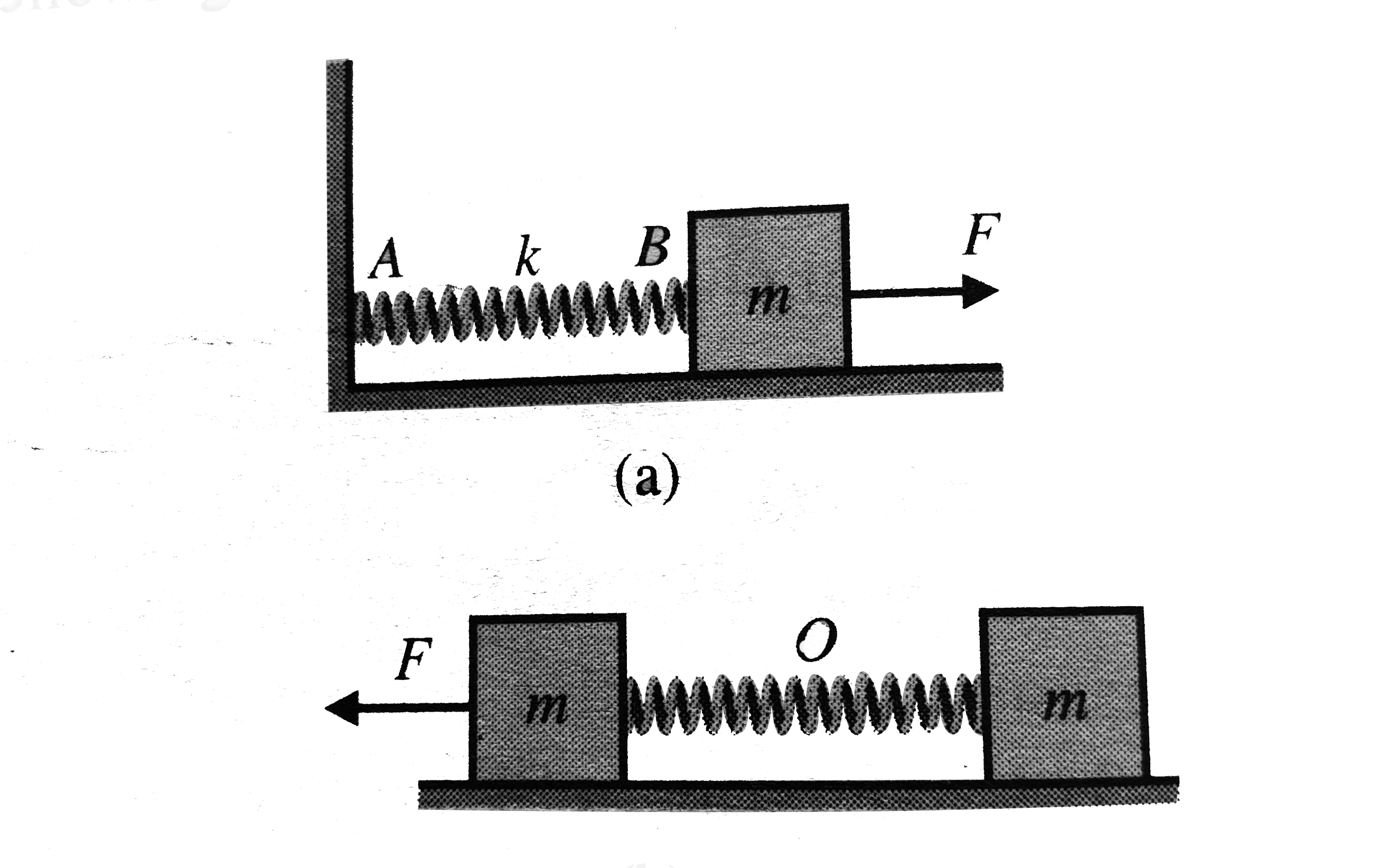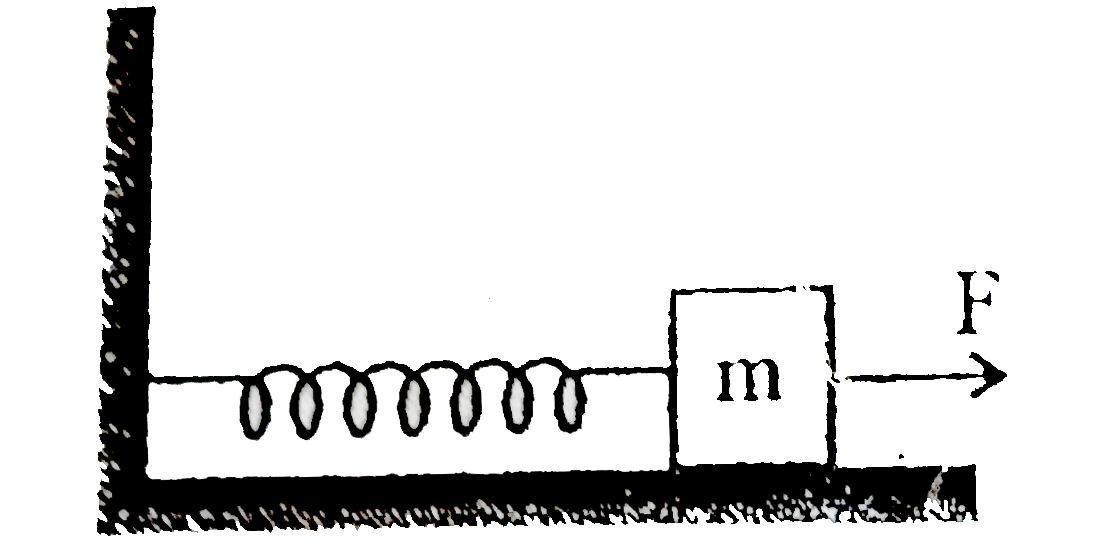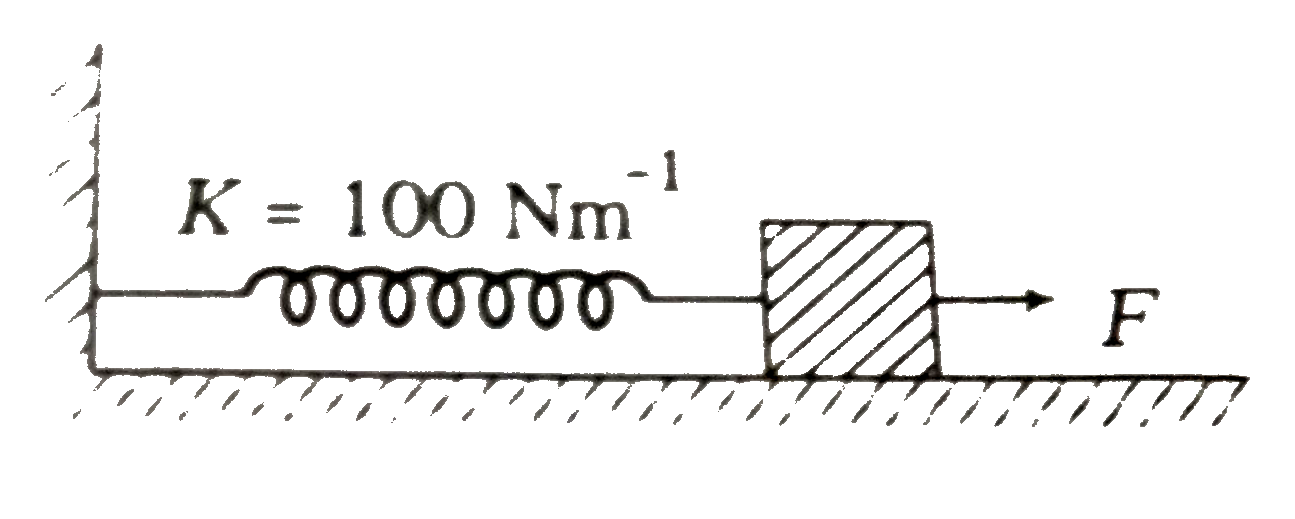Which type of strain is there, when a spiral spring is stretched by a force?
longitudinal strain
volumetric strain
shear strain
Both (a) and (c)
The correct Answer is:D
To determine the type of strain that occurs when a spiral spring is stretched by a force, we can analyze the situation step by step.
1. Understanding Strain: Strain is defined as the deformation per unit length of a material when subjected to an external force. There are different types of strain, including longitudinal strain, volumetric strain, and shear strain.
2. Identifying the Type of Strain:
- Longitudinal Strain: This occurs when a material is stretched or compressed along its length. It is defined as the change in length divided by the original length.
- Volumetric Strain: This occurs when a material changes its volume due to uniform pressure applied in all directions.
- Shear Strain: This occurs when a material is subjected to forces that cause it to deform in a direction parallel to the force.
3. Analyzing the Spiral Spring: When a spiral spring is stretched by a force, the force acts along the length of the spring. This means that the spring is being elongated.
4. Conclusion: Since the spring is being stretched along its length, the type of strain that occurs is longitudinal strain.
Final Answer:
The type of strain that occurs when a spiral spring is stretched by a force is longitudinal strain.
---
- Longitudinal Strain: This occurs when a material is stretched or compressed along its length. It is defined as the change in length divided by the original length.
- Volumetric Strain: This occurs when a material changes its volume due to uniform pressure applied in all directions.
- Shear Strain: This occurs when a material is subjected to forces that cause it to deform in a direction parallel to the force.
The type of strain that occurs when a spiral spring is stretched by a force is longitudinal strain.
Topper's Solved these Questions
- ELASTICITYBOOK - DC PANDEY ENGLISHCHAPTER - ELASTICITYEXERCISE - Check point 12.2
15 Videos
- ELASTICITYBOOK - DC PANDEY ENGLISHCHAPTER - ELASTICITYEXERCISE - Check point 12.3
15 Videos
- ELASTICITYBOOK - DC PANDEY ENGLISHCHAPTER - ELASTICITYEXERCISE - Level 2 Subjective
10 Videos
- CURRENT ELECTRICITYBOOK - DC PANDEY ENGLISHCHAPTER - CURRENT ELECTRICITYEXERCISE - All Questions
469 Videos
- ELECTROSTATICSBOOK - DC PANDEY ENGLISHCHAPTER - ELECTROSTATICSEXERCISE - Integer
17 Videos
Similar Questions

Figure. (a) shows a spring of force constant k fixed at one end and carrying a mass m at the other end placed on a horizontal frictionless surface. The spring is stretched by a force F. Figure. (b) shows the same spring with both endsf free and a mass m fixed at each free end Each of the spring is streched by the same force F. The mass in case (a) and the masses in case (b) are then released. Which of the following statements are true?
View SolutionAn elastic spring of unstretched length L and spring constant K is stretched by a small length x. It is further stretched by another small length y. the work done in second stretcing is
View SolutionTwo blocks A and B of mass m and 2m respectively are connected by a light spring of force constant k. They are placed on a smooth horizontal surface. Spring is stretched by a length x and then released. Find the relative velocity of the blocks when the spring comes to its natural length

View SolutionA mass m is attached to a spring. The spring is stretched to x by a force F and refeased. After being released, the mass comes to rest at the initial equilibrium position. The coeffiecient of friction, μk , is :−

View SolutionTwo springs have force constants k1 and k2(k1>k2). On which spring is more work done, if (i) they are stretched by the same force and (ii) they are stretched by the same amount ?
View SolutionWhen a spring a stretched through a distance x, it exerts a force given by F=(−5x−16x3)N. What is the work done, when the spring is stretched from 0.1 m to 0.2 m?
View SolutionConsider a block connected to a light spring of spring constant 100Nm−1. Now the block is displaced by applying a constant force F which gives zero resultant force when spring is stretched through 10 cm.

Evaluate
(i) Work done by the spring force when the block attains equilibrium.
(ii) Net work done on the block when it attains maximum speed.
View SolutionFigure a) shows a spring of force constant k clamped rigidly at once end and a mass m attached to its free end. A force F applied at the free end stretches the spring. Figure b) shows the same spring with both ends free and attached to a mass m at either end. Each end of the spring in figure is stretched by the same force F.
(a) What is the maximum extension of the spring in the two cases ?
(b) If the mass in figure and the two masses in figure are released free, what is the period of oscillation in each case?

View SolutionFigure a) shows a spring of force constant k clamped rigidly at once end and a mass m attached to its free end. A force F applied at the free end stretches the spring. Figure b) shows the same spring with both ends free and attached to a mass m at either end. Each end of the spring in figure is stretched by the same force F.
(a) What is the maximum extension of the spring in the two cases ?
(b) If the mass in figure and the two masses in figure are released free, what is the period of oscillation in each case?

View SolutionAssuming that potential energy of spring is zero when it is stretched by x02, its potential energy when it is compressed by x0 is
View Solution
